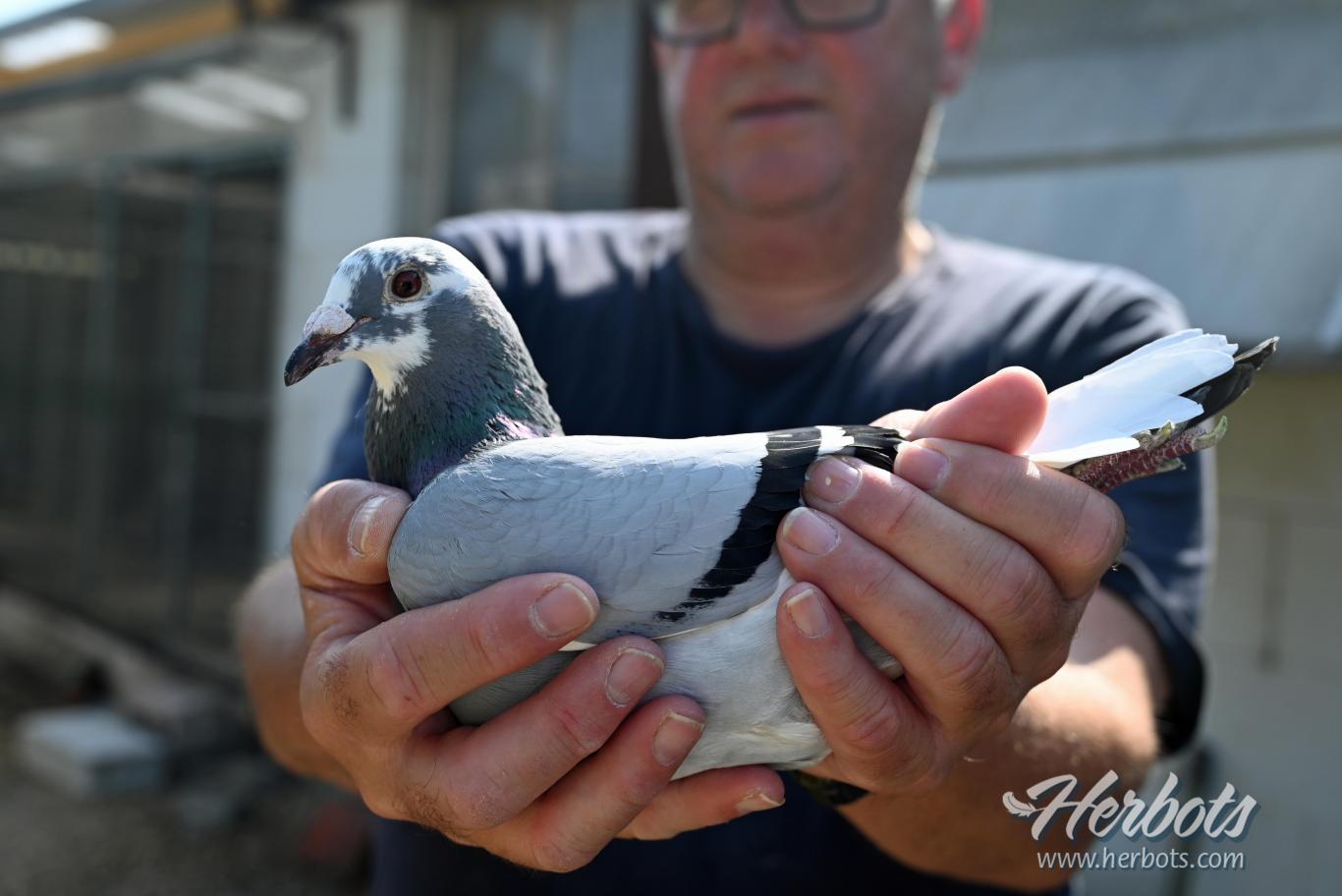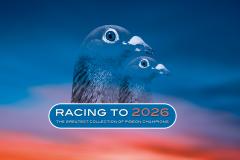Van Eynde-Goovaerts (Putte): 1st National Bourges 17,163 yearbirds - fastest of 30.743b.
16 Jun 2025
"Lieve"
B24-6045758
1st National Bourges 17.163 yearbirds - fastest of 30,743b.
Distance: 491km
Velocity: 1,295 m/m
It is the 2nd national win for Marc Van Eynde and Josepg Goovaerts from Putte (Grasheide), but this one is still the best one for them. Reason ... they win this national with their favourite ‘Lieve’. ‘Lieve’ not only knows the art of putting top performances on paper but is a real ‘beauty’ in the hand. Thickly plumed, super muscular... pure class.
To return to the top performances of ‘Lieve’. A complete overview of all her achievements can be found in the photo report but we would like to pick out a few stunners:
Among others, ‘Lieve’ (B24-6045758) won
1st Sermaises 1,364d in 2024.
1st Melun 2,361d.
1st Melun 3,919d. (12th Prov. 12,691d.)
2nd Momignies 2,193d.
20th National Chateauroux 15,060d.
In 2025, ‘Lieve’ already shone with, among others:
24/05 44th Bourges 4,057d.
31/05 18th Orleans 3,626d.
08/06 14th Argenton 3,137d. (79th National 13,988d.)
16/06 1st National Bourges 17,163d. - fastest of 30,743 pigeons
Only with hens
Marc says: "Since a few years we decided to play only with hens and up to now this has been more than successful. We started the season with 36 ladies and at the moment 23 hens are still looking in our direction when we enter the loft. The hens have a large resting pen with adapted small trays and a wire system should keep the hens off the ground so they don't mate among themselves. In front of this department is a spacious aviary where they usually house during the day. Here the hens sit on grids and there is more opportunity for them to mate among themselves but for now we don't bother with this.
The hens train twice a day. They usually move away for about 20 minutes and when they come back they are immediately called in. Reason is that hawks live in the neighbourhood and those guys like to have pigeon on their menu, so don't take any risks and after training call all pigeons inside as soon as possible.
Can you believe that in spring we didn't dare to release the hens. At the beginning of March, we paired them and they were allowed to raise a pair of youngsters. During this period, as with the youngsters, we started teaching them on 1,2,4 etc. kilometres. The aim was to get them in better condition which made them more manageable to beat those hawk attacks.
In terms of feed, we mix Van Robaeys and Matador mixtures. When they arrive home, they are given light feed in the aviary. They are first allowed to recover quietly before they join their cock. I even dare, like after a heavy flight like Bourges, to wait until the day after to leave the hens with their cocks. After the first light mixture, we switch to 50% Turbo and 50% breeding mixture. Afterwards, a light mixture is fed again and from Wednesday to Thursday (basketing day) it is 50% Sport Van Robaeys and 50% Turbo.
On the day of basketing they get a good training, a bath and an hour of cuddling their cock.In terms of by-products, we use Röhnfried's products. During the winter period we visit vet Vincent Schroeder and during the season we visit vet Stijn Rans every 3 weeks. We never do blind vaccinations, only on the vet's recommendation will we do anything.
Marc and Jozef, congratulations with this win and you managed to tell us that ‘Lieve’ will get a ticket for the breeding loft. We are convinced that she will make a name for herself there too and produce good descendants.
Stefan Mertens



























